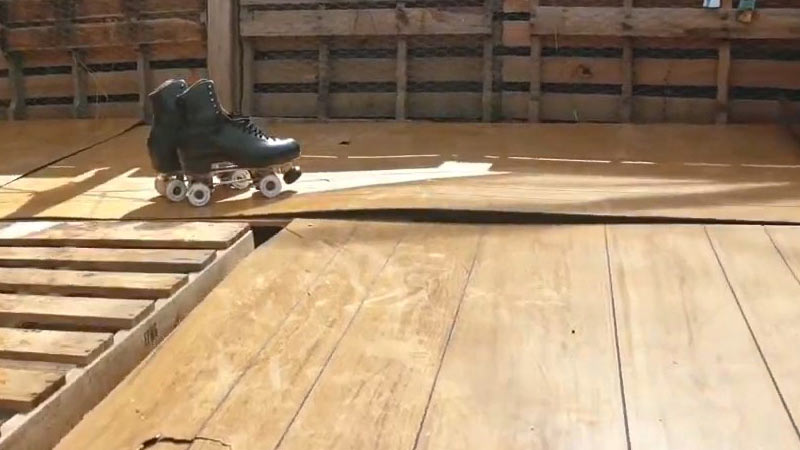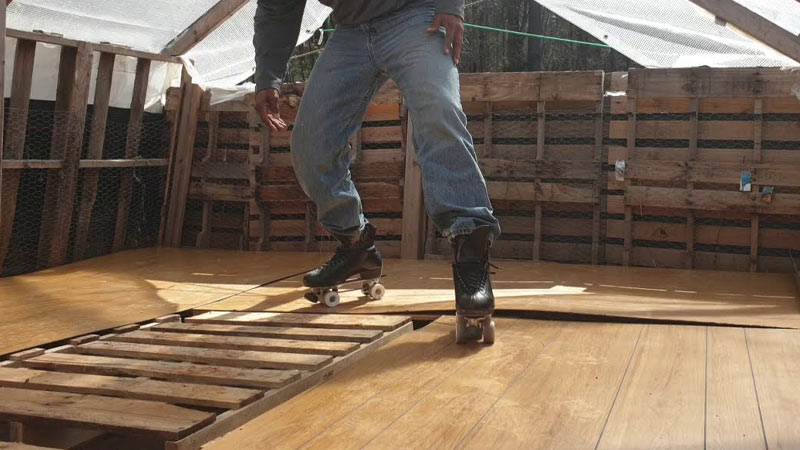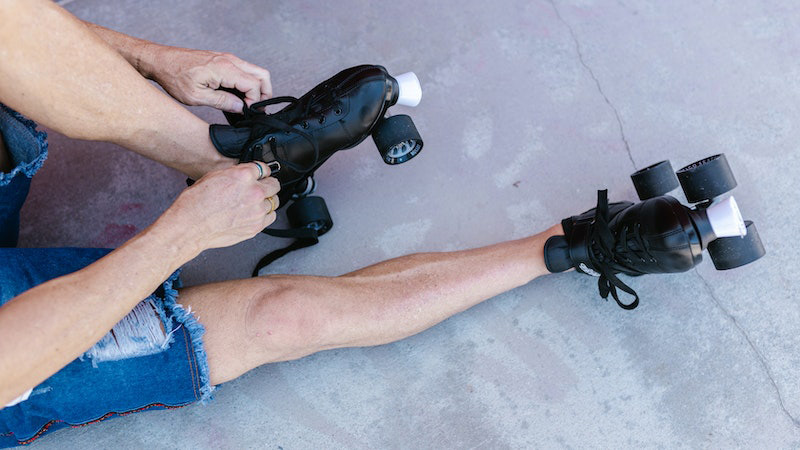Building a roller skating rink in your backyard can transform your outdoor space into a hub of family fun and recreation.
Whether you’re a seasoned skater or a novice enthusiast, crafting your own rink provides an exciting opportunity to bring the joy of skating right to your doorstep.
This guide will walk you through the step-by-step process of creating a safe and enjoyable space for skating in your backyard.
From the initial planning stages to the nitty-gritty of surface materials and safety measures, we’ll explore the essential considerations and pro tips to help you build a DIY roller skating rink.
With careful planning and the right materials, you can curate a space that encourages healthy activity, fosters family bonding, and even becomes a social hotspot for friends and neighbors. So, stay focused.
Basics of DIY Backyard Roller Skating Rink
Creating a backyard roller skating rink can be a fun project. Start by clearing the area and ensuring a smooth surface. Measure the space for the rink and mark its boundaries using chalk or string.
Use materials like plywood, PVC piping, or even interlocking tiles to create the rink’s borders.
Make sure the edges are secured and smooth to prevent trips or falls. Add a protective barrier like padded mats or hay bales around the perimeter for safety.
If you want a smoother surface, a plastic tarp or a few layers of polyethylene can serve as the base before adding a slick surface like masonite or a special rink liner.
Consider proper lighting and maybe some music for a lively atmosphere. With safety in mind, have helmets and pads available, and voilà, you have your DIY backyard roller skating rink!
Why You Need to Build a Backyard Roller Skating Rink?

Introducing a backyard roller skating rink can offer a multitude of benefits, making it an engaging and valuable addition to your home:
Convenience and Accessibility
Having a personal roller skating rink in your backyard means easy access to a fun activity anytime.
You don’t have to travel to a rink, pay fees, or adhere to their schedules. It’s all at your doorstep, promoting more frequent and convenient family fun.
Personalized Experience
Design the rink to suit your preferences. Whether it’s the size, the surface material, or even the aesthetics, you have the freedom to customize the rink according to your liking.
You can create a space that fits your family’s needs and style.
Physical Activity and Health Benefits
Roller skating is a fantastic exercise. It improves balance, coordination, and cardiovascular health.
With a rink in your backyard, it’s easier to incorporate regular physical activity into your routine, promoting a healthier lifestyle for you and your family.
Social Gathering Hub
It becomes a natural space for socializing and entertaining. Friends and family can gather for skating sessions or parties.
It fosters a sense of community and fun, providing a space for bonding and making memories right in your own home.
Skill Development and Fun Learning
For kids, having a drink at home offers a safe and controlled environment to learn and master roller skating.
It’s an opportunity to develop new skills, build confidence, and have fun, all within the comfort and safety of your backyard.
Planning Your Roller Skating Rink
In the planning stages of your backyard roller skating rink, several key considerations can make the process smoother and the outcome more enjoyable:
Space and Layout Design
Measure your available space and determine the layout for your rink. Consider the ideal size and shape, ensuring it fits comfortably in your yard while allowing ample space for skaters.
Plan for safety zones around the perimeter and any additional features like seating areas.
Surface Preparation and Materials
Choose the right materials for your rink’s surface. Plywood, PVC piping, or interlocking tiles can serve as borders.
Consider a smooth, durable base, materials like masonite or a specialty rink liner work well. Ensure the surface is level and free of debris, offering a safe and enjoyable skating experience.
Safety Measures
Prioritize safety by incorporating protective measures. Add a buffer zone around the edges using padded mats, hay bales, or other barriers to prevent accidental falls.
Additionally, make sure the surface is smooth and free of any sharp or protruding objects to reduce the risk of injuries.
Accessories and Amenities
Plan for additional features to enhance the skating experience.
Think about lighting options for evening or night skating, seating for observers or resting skaters, and maybe even a small sound system for music.
These amenities can elevate the ambiance and enjoyment of the rink.
Maintenance and Longevity
Consider the maintenance required for your rink. Choose durable materials that can withstand various weather conditions.
Regularly inspect and maintain the surface and borders to ensure longevity and safety for continuous skating enjoyment.
Things You’ll Need to Build a Home Roller Skating Rink

To construct a home roller skating rink, several essential items and tools are necessary for a successful build:
Border Materials
Gather materials to create the rink’s borders. Options include plywood, PVC piping, or interlocking tiles.
These borders provide structure and containment for the skating surface. Ensure they’re sturdy and secure to prevent shifting during use.
Smooth Skating Surface
Choose a suitable surface material. Masonite, a smooth plywood, or a specialized rink liner works well to create a slick and skatable surface.
Ensure the material is durable, weather-resistant, and smoothly laid out to prevent bumps or inconsistencies that could impede skating.
Tools for Construction
Essential tools such as a measuring tape, a saw for cutting materials to size, a level for ensuring a flat surface, and a drill for securing the borders are necessary.
Have safety equipment like gloves and goggles for handling materials and tools.
Safety Accessories
Prioritize safety by having appropriate safety gear available. Helmets, knee pads, elbow pads, and wrist guards are crucial, especially for beginners or younger skaters.
Additionally, consider safety barriers around the perimeter of the rink, like padded mats or hay bales, to prevent injuries from falls.
Adequate Lighting and Amenities
If you plan to skate during the evening or night, consider installing proper lighting around the rink for safety and visibility.
Additionally, amenities like seating, music systems, and even weather protection (such as a sunshade or a tent) can enhance the overall experience for skaters and spectators.
How to Build a Roller Skating Rink in Your Backyard

Constructing a roller skating rink in your backyard involves several key steps to ensure a safe and enjoyable space for skating:
Preparation and Clearing
Begin by clearing the designated area. Remove any debris, rocks, or obstacles.
Level the ground as much as possible to create a smooth surface, considering using a lawn roller or similar tools to flatten the ground.
Layout and Borders
Measure and mark the boundaries of the rink using chalk or string. Establish the desired size and shape.
Build borders using sturdy materials like plywood, PVC piping, or interlocking tiles. Secure these borders firmly to contain the skating surface.
Surface Creation
Choose a suitable surface material. Lay down a smooth base, such as a plastic tarp, and cover it with a slick surface material like masonite or a specialized rink liner.
Ensure the surface is flat, free of bumps, and securely attached to the borders for a seamless skating experience.
Safety Measures
Implement safety features such as protective barriers around the perimeter using padded mats or hay bales.
Ensure the edges are smooth to prevent tripping hazards. Have safety gear available, including helmets, knee pads, and wrist guards, especially for beginners or younger skaters.
Finishing Touches
Consider additional features like lighting for night skating, seating areas, and even landscaping around the rink to create an inviting and enjoyable environment.
Regularly maintain the rink, ensuring the surface and borders are in good condition for safe and continued use.
Pro Tips to Make DIY Roller Skating Rink
Crafting a DIY roller skating rink involves attention to detail and a few pro tips to ensure a successful build:
Surface Selection and Maintenance
Opt for a durable and smooth surface material. Masonite or a specialized rink liner offer excellent glide for skaters.
Regularly inspect and maintain this surface, ensuring it remains free of imperfections that could impede skating. Consider weatherproofing measures to prolong its lifespan.
Proper Drainage and Weather Considerations
Ensure adequate drainage for the rink to prevent water accumulation, especially after rainfall.
Consider the effects of weather on the surface material, protect it from excessive moisture or direct sunlight, as these elements can impact the surface quality and skater experience.
Optimal Border Construction
Construct sturdy and well-secured borders for the rink. Use reliable materials such as pressure-treated lumber or PVC framing.
Ensure the borders are level, firmly anchored, and offer a smooth transition onto the skating surface to prevent trip hazards.
Flexible Lighting Solutions
Explore creative lighting options for evening or night skating. String lights, solar-powered fixtures, or portable lighting solutions offer flexibility and ambiance.
Ensure these lighting options are weather-resistant and strategically placed for optimal visibility without causing glare or hindering skaters.
Community Engagement and Events
Consider hosting community events or skating parties to engage with neighbors and friends.
Promote safety awareness, organize skating lessons, or even themed skate nights to foster a vibrant and inclusive atmosphere within your DIY rink.
FAQs
How to build a roller skating rink floor?
Constructing a roller skating rink floor involves selecting suitable materials like plywood, plastic tiles, or specially designed interlocking tiles.
The chosen surface should be durable, smooth, and capable of withstanding the abrasion caused by skates. Ensure the subfloor is even and properly prepared before laying the skating surface.
What are the roller skating rink dimensions?
Standard roller skating rinks typically measure around 18,000 to 20,000 square feet. However, for a backyard rink, dimensions vary based on available space.
A common size for a backyard rink might be around 20 feet wide and 40 feet long, but this can be adjusted based on available area and personal preference.
How to build a skating rink at home?
To create a skating rink at home, you’ll need to prepare the area by leveling the ground and ensuring proper drainage.
Once the area is prepped, select the appropriate flooring material and lay it down, making sure it’s firmly secured. Surround the area with barriers or borders to contain the rink and provide safety for skaters.
DIY roller rink?
Creating a DIY roller rink involves planning the layout and design, selecting the right materials for the flooring, and establishing a flat and even surface.
Additionally, it involves setting up barriers or borders around the rink, ensuring proper drainage, and potentially adding lighting or decorative elements to personalize the space.
Roller rink dimensions?
For a DIY roller rink, the dimensions can vary based on available space.
Common backyard rink sizes range from around 20 feet by 40 feet, but the key is to adapt the dimensions to fit your available area and accommodate skaters comfortably.
The aim is to have enough space for movement and activities while ensuring safety.
Wrapping Up
Creating a roller skating rink in your backyard opens up a world of possibilities for entertainment and healthy recreation.
By following the outlined steps and taking into account the safety measures and material considerations, you’re not just building a rink; you’re constructing a space where cherished memories and shared experiences will flourish.
It’s a place for laughter, learning, and leisure—an inviting space that brings people together.
Whether it’s the thrill of learning to skate or the joy of hosting skating parties, your DIY rink is more than just a recreational area; it’s a center for bonding and fun in the comfort of your own home. Best of luck.







